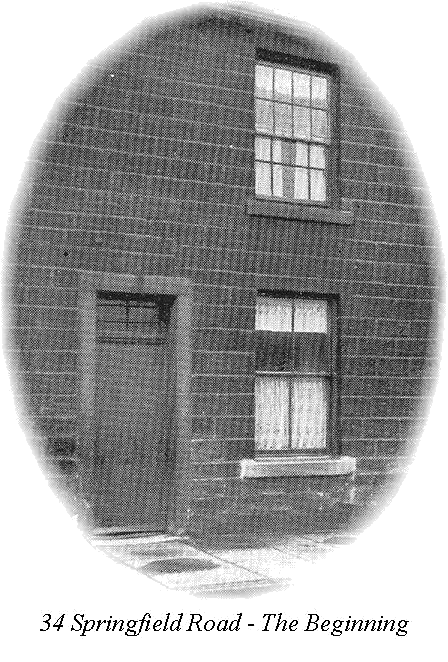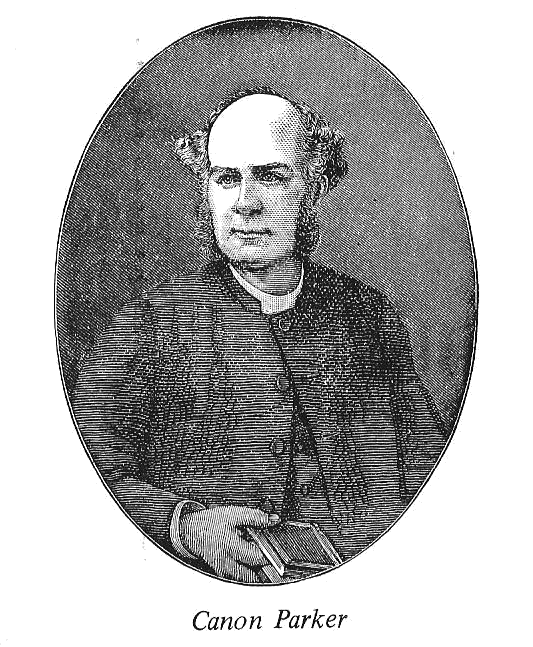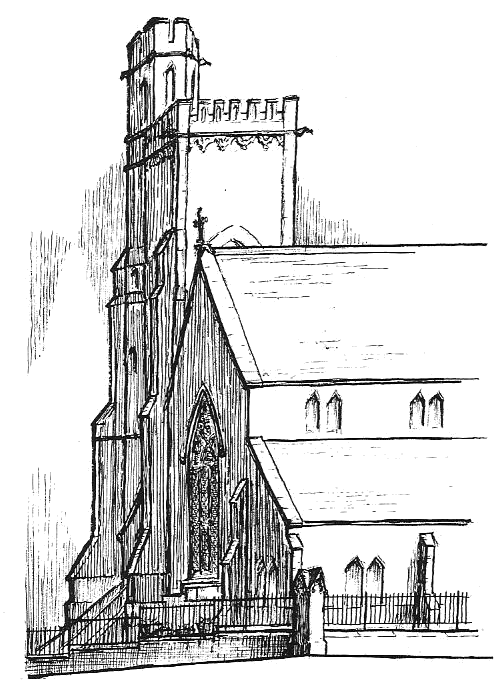By 1867, the population of Burnley had followed industry across the Leeds and Liverpool canal from old Burnley to the east, and the cotton mills were spreading along the Calder's bank towards Townley. With the mills came the humble workers' dwellings rank upon rank towards the wooded area to the south. On this rising ground a new community was born: Burnley Wood.
 Two years earlier in 1865 the clergy and people of St Paul's established a mission in a four roomed cottage at 34 Springfield Road, Burnley Wood. Sunday School was a first priority and on the first Sunday, which was the 25th of October, four pioneers from St Paul's came across the river Calder using the stepping stones, arrived at Springfield road and sang a hymn "We are not ashamed to own the Lord". The children heard them and began to gather, only a few at first, but soon Sunday by Sunday the numbers grew until all the rooms of the little house hummed with activity. They learned their abacus: to read and to write. They sang to the music of the violin, the only musical instrument ever to be heard in the humble little school. The little house also became, the Parish Rooms. There were tea-parties in the bedroom, entertainments and mid week services, and it was there that the first day school classes were held.
Two years earlier in 1865 the clergy and people of St Paul's established a mission in a four roomed cottage at 34 Springfield Road, Burnley Wood. Sunday School was a first priority and on the first Sunday, which was the 25th of October, four pioneers from St Paul's came across the river Calder using the stepping stones, arrived at Springfield road and sang a hymn "We are not ashamed to own the Lord". The children heard them and began to gather, only a few at first, but soon Sunday by Sunday the numbers grew until all the rooms of the little house hummed with activity. They learned their abacus: to read and to write. They sang to the music of the violin, the only musical instrument ever to be heard in the humble little school. The little house also became, the Parish Rooms. There were tea-parties in the bedroom, entertainments and mid week services, and it was there that the first day school classes were held.
 A plot of land had been given by the Rector of Burnley, Canon Townley Parker, for the foundation of a new school. Other benefactors in this new venture included General Scarlett of the 'Heavy Brigade' fame at the Crimea. By 1870 a new School was opened and it was called St Stephen's. By this time grants had been made for the payment of a Curate for the district and the Rev. B Robinson took the post and moved in with a Wesleyan family on Smalley Street. The School was licensed for preaching, and the first sermon was preached, the next day by Rev B Robinson. The minister also revealed that in the very near future it was intended to build a church.
A plot of land had been given by the Rector of Burnley, Canon Townley Parker, for the foundation of a new school. Other benefactors in this new venture included General Scarlett of the 'Heavy Brigade' fame at the Crimea. By 1870 a new School was opened and it was called St Stephen's. By this time grants had been made for the payment of a Curate for the district and the Rev. B Robinson took the post and moved in with a Wesleyan family on Smalley Street. The School was licensed for preaching, and the first sermon was preached, the next day by Rev B Robinson. The minister also revealed that in the very near future it was intended to build a church.
It is fitting to set out in detail the benefactions of Canon Parker, Rector of Burnley. Firstly he gave the land described in the deeds as "1081 square yards of land situated in the Township of Habergham Eaves within the Parish and Rectory of Burnley and within the ancient limits of the Parish of Whalley in the County of Lancaster." Secondly he gave in cash about £875 which proved to be one tenth of the cost of the whole project. Thirdly from his own living he provided and "undertook out of the revenues of his rectory to be carried out through the Ecclesiastical Commissioners and notified to the Bishop (of Manchester)" from ground rents the sum of £150 per annum as an Endowment of the living. And he appointed to be vicar designate his own curate Rev. James Cranbrook (who would be vicar for 35 years).
The Committee and Vicar Designate were very much involved with the carving out of the new Parish from the territory of St Peter's Parish and that of St Paul and the settling of  the new Parish boundaries. It involved obtaining the sanction of the Crown, as the living of St Paul's was in the gift of the Crown. There appears on the lawyer's statement of account this item "To attending on the Earl of Beaconsfield (Prime Minister Disraeli) to obtain the Episcopal Seal and for transmitting the proposals to the Privy Council. In due course an Order in Council was received, registered and deposited in the Episcopal Registry and notice formally given in the London Gazette of the confirmation of the formation of the new Parish of St. Stephen Burnley. The lawyers drew up, also, the "Petition to Consecrate" and formulated the sentence of Consecration to be used by the Bishop of Manchester (Bishop Fraser) at the ceremony. The ceremony took place on the morning of the 1st of February 1879.
the new Parish boundaries. It involved obtaining the sanction of the Crown, as the living of St Paul's was in the gift of the Crown. There appears on the lawyer's statement of account this item "To attending on the Earl of Beaconsfield (Prime Minister Disraeli) to obtain the Episcopal Seal and for transmitting the proposals to the Privy Council. In due course an Order in Council was received, registered and deposited in the Episcopal Registry and notice formally given in the London Gazette of the confirmation of the formation of the new Parish of St. Stephen Burnley. The lawyers drew up, also, the "Petition to Consecrate" and formulated the sentence of Consecration to be used by the Bishop of Manchester (Bishop Fraser) at the ceremony. The ceremony took place on the morning of the 1st of February 1879.
Thank you to the late Mr A J Taylor for the use of extracts from his book "The Story of the Parish of St Stephen's Burnley" available to read at Burnley Library. Mr Taylor was Reader Emeritus of St Stephen's and devoted much of his life to the Parish.